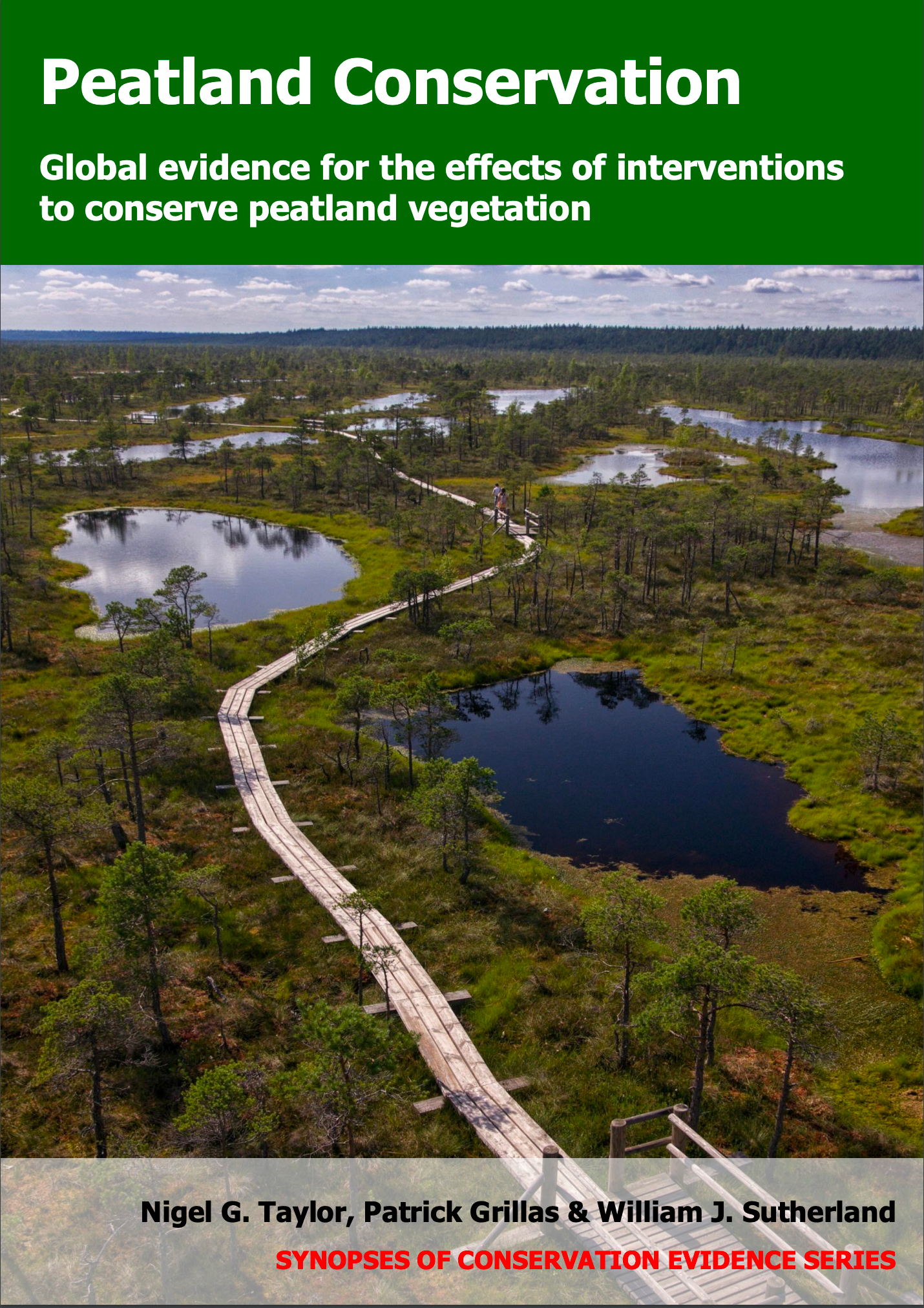Stabilize peatland surface to help plants colonize
-
Overall effectiveness category Unknown effectiveness (limited evidence)
-
Number of studies: 1
View assessment score
Hide assessment score
How is the evidence assessed?
-
Effectiveness
20% -
Certainty
20% -
Harms
5%
Study locations
Supporting evidence from individual studies
A controlled, before-and-after study in 2007–2010 in a degraded blanket bog in England, UK (Anderson et al. 2011) found that adding coconut fibre rolls to stabilize the peat surface had no effect on vegetation cover. Comparing data from before intervention and three years after, vegetation cover increased by a similar amount in areas with and without the rolls. This was true for total vegetation cover (with rolls: from 6 to 10%; without: from 15 to 20%), moss cover (with rolls: from 0 to 1.0%; without: from 0 to 2.5%), dwarf shrub cover (with rolls: from 0.5 to 1%; without: from 0.5 to 4%) and common cottongrass Eriophorum angustifolium cover (with rolls: from 1 to 3%; without: from 4 to 7%). In March 2007, coconut fibre rolls were pegged onto an area of almost-bare peat to stabilize it. An adjacent area was left untreated. Sheep were excluded from both areas before the study began. In 2007 (before intervention) and 2010, vegetation cover was estimated in thirty 2 x 2 m quadrats/area.
Study and other actions tested
Where has this evidence come from?
List of journals searched by synopsis
All the journals searched for all synopses
This Action forms part of the Action Synopsis:
Peatland Conservation
Peatland Conservation - Published 2018
Peatland Conservation





)_2023.JPG)














